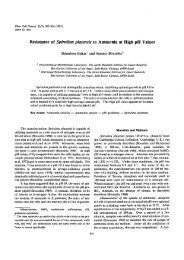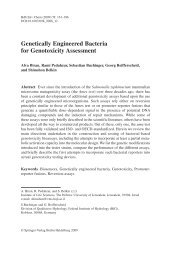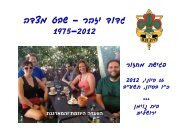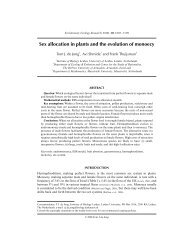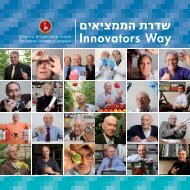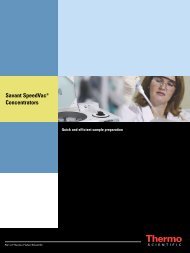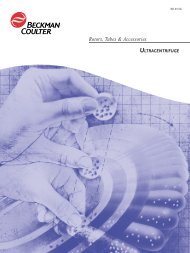LIQUID SCINTILLATION COUNTING
LIQUID SCINTILLATION COUNTING
LIQUID SCINTILLATION COUNTING
Create successful ePaper yourself
Turn your PDF publications into a flip-book with our unique Google optimized e-Paper software.
The organic scintillators used in LSC’s have a lower gamma ray absorption coefficient than<br />
inorganic (NaI) scintillators. The photoelectric effect is small when E > 300 keV and Compton<br />
scattering becomes the main absorption process. The pulse thus depends upon gamma energy.<br />
For E < 20 keV, the photoelectric effect in which all gamma energy transferred to a single<br />
electron, predominates. For 20 keV < E < 100 keV, both the photoelectric and Compton effects<br />
contribute. And, for 100 keV < E < 3000 keV, the Compton effects predominates. But for 125 I,<br />
counting efficiency can be as high as 76% in a typical emulsifier type LSC (Figure 4).<br />
Figure 4. Spectrum Plot of 125 I Using LSC<br />
QUENCH<br />
Quench is a reduction in system efficiency as a result of energy loss in the liquid scintillation<br />
solution. Because of quench, the energy spectrum detected from the radionuclide appears to shift<br />
toward a lower energy (Figure 5). The three major types of quench encountered are photon,<br />
chemical, and optical quench. Photon quenching occurs with the incomplete transfer of beta<br />
particle energy to solvent molecules. Chemical, sometimes called impurity, quenching causes<br />
energy losses in the transfer from solvent to solute. Optical or color quenching causes the<br />
attenuation of photons produced in solute.<br />
Figure 5. Effect of Quenching on an Energy Spectrum<br />
6




